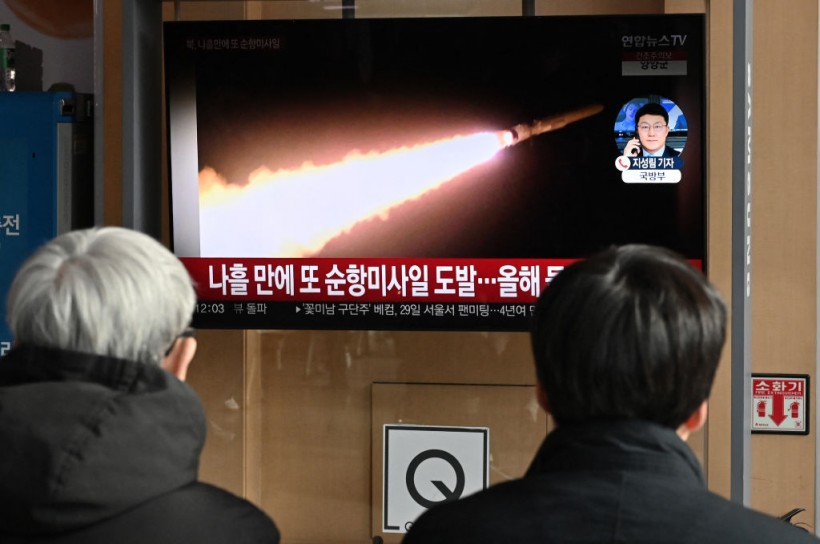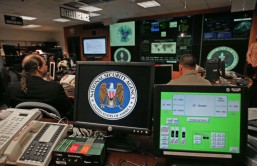
(Photo : JUNG YEON-JE/AFP via Getty Images)
North Korea tested an intermediate-range ballistic missile on Tuesday, moving it closer to its goal of hitting distant American locations in the Pacific, according to South Korea's military.
The missile was launched from an area near the North Korean capital, Pyongyang, and traveled approximately 372 miles before landing in the sea between the Korean Peninsula and Japan, according to South Korea's Joint Chiefs of Staff.
North Korea Test-Fires Missile Amidst Tensions
The Joint Chiefs of Staff spokesperson, Lee Sung Joon, stated that the launch was probably a reaction to North Korea's March test of a solid-fuel engine intended for a new intermediate-range hypersonic missile that it was building.
Experts warn that if such missiles were mastered, they might reach Guam, the US Pacific naval center, and further.
Lee did not provide details on why the South Koreans were evaluating the missile as an IRBM or whether it was flown below its full capacity. However, he suggested that the North Koreans were likely conducting tests to explore new warhead technologies.
He continued, saying, "We have increased monitoring and are closely sharing pertinent information with the US and Japan."
The coastguard advised mariners to stay alert and report any falling items without touching them, and Tokyo confirmed the launch.
Japan's Prime Minister Fumio Kishida blasted the launch, telling the press that North Korea has "repeatedly launched ballistic missiles" this year, calling it "absolutely unacceptable" and a danger to regional security.
The third ballistic missile launch of 2024 took place, and North Korea is alleged to be testing a brand-new, intermediate-range hypersonic missile with a solid fuel engine.
This happens a week before South Korea's general elections, days after a Russian veto ended UN expert monitoring of North Korean sanctions violations, and in the midst of an investigation into possible arms transfers between Moscow and Pyongyang, according to Al Jazeera.
North Korea Escalates Weapons Development
Leif-Eric Easley, a professor at Ewha University in Seoul, stated in an email that "the Kim regime prioritizes advancing its military capabilities and doesn't care to stay quiet during the South Korean legislative election campaign."
North Korea has directed more of its latest attempts on producing weapons with solid propellants integrated into them. These weapons can be engineered to launch more quickly than liquid-propellant missiles, which must be fuelled before launch and cannot be kept fueled for extended periods of time. They are also easier to transport and conceal.
Furthermore, North Korean dictator Kim Jong Un has pledged to amass hypersonic missiles capable of overwhelming the missile defense systems of its enemies.
North Korea has also launched "super-large" multiple rocket launchers and cruise missiles this year, all of which are directed against the Seoul metropolitan region.
Two days before a particularly latest launch, North Korea repeated its intention to launch more surveillance satellites this year. The military of South Korea declared on Monday that there was no indication that the North's primary launch complex in the northwest is about to conduct a satellite launch.
Satellites are essential for tracking military activities in the United States and South Korea, according to Kim, and for boosting the threat posed by his nuclear-capable missiles. North Korea sent a military surveillance satellite into orbit for the first time in November, AP News reported.
Related Article: North Korea: Kim Jong Un Calls for Airtight Combat Preparedness, Visits First Tank Unit That Entered Seoul During Korean War









